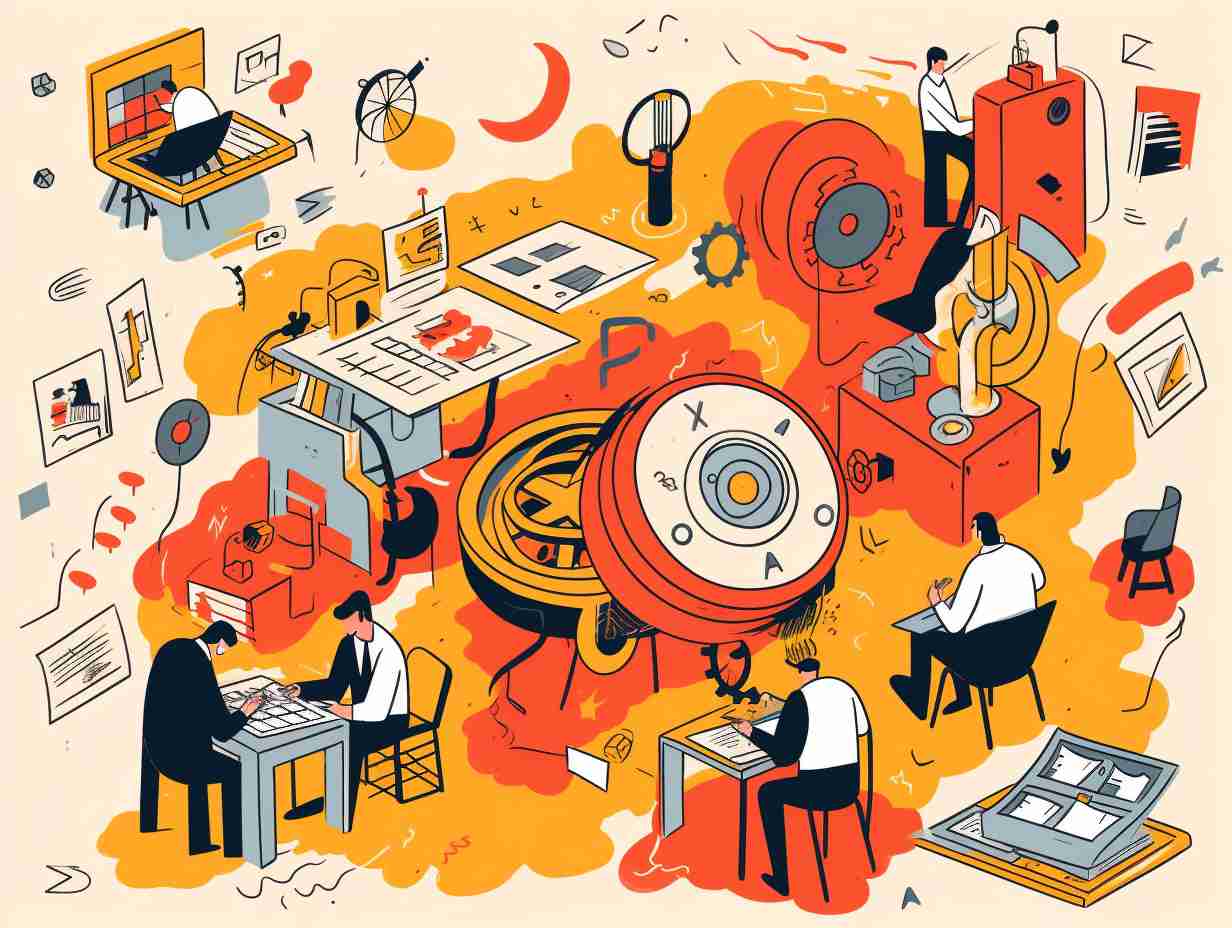
Solving Draft Dilemmas: Troubleshooting Insights
Table Of Contents
- Dealing with Writer’s Block
- Overcoming Structural Issues
- Finding Your Writing Voice
- Editing and Revising Your Draft
- Streamlining Your Writing Process
- Getting Feedback from Others
- Managing Time and Priorities
- Staying Motivated Throughout the Drafting Process
- Balancing Creativity and Structure
- Crafting a Strong Opening and Closing for Your Draft
- Frequently Asked Questions
- Conclusion

Are you struggling to get your writing project off the ground? Do you find yourself stuck with writer’s block, unsure of how to structure your draft, or uncertain of your writing voice? Worry no more because in this article, we’ll provide you with some troubleshooting insights on how to solve common draft dilemmas so that you can finally finish that piece of writing.
Firstly, we’ll tackle one of the most frustrating issues writers face: writer’s block. You’ve got an idea in mind but can’t seem to put it into words. It happens to all writers at some point, but there are ways to overcome it. We’ll explore tips and tricks on how to break through that mental barrier and kickstart your creative flow again. From there, we’ll move on to other common dilemmas such as structural issues, finding your voice, editing and revising your draft, managing time and priorities, staying motivated throughout the drafting process, balancing creativity and structure and crafting a strong opening and closing for your draft. Keep reading for our expert insights on how to solve these challenges!
Dealing with Writer’s Block

If you’re struggling to get words on the page, don’t worry - writer’s block happens to everyone, but there are plenty of strategies you can try to help break through it. One technique is brainstorming. Set a timer for 10-15 minutes and write down any idea that comes to mind. It doesn’t matter if they seem silly or unrelated, just keep writing until the timer goes off. Then review your list and see if anything sparks inspiration for your draft.
Another way to seek inspiration is by taking a break from writing altogether. Go for a walk, listen to music, read a book, or do something else creative like drawing or baking. Sometimes stepping away from your work can give you the mental space needed to generate new ideas and perspectives that can help overcome writer’s block. Remember that writer’s block is temporary and with these techniques in mind, you’ll be back on track in no time!
Overcoming Structural Issues
You can’t ignore the elephant in the room when it comes to overcoming structural issues - they require a strong foundation before any progress can be made. The first step towards building a solid structure is to use outlining techniques. Before you start writing, take some time to organize your ideas and thoughts into a clear outline. This will help you identify any gaps or inconsistencies in your argument and allow you to address them before you start writing.
Once you have an outline, it’s important to focus on paragraph structure. Each paragraph should have a clear topic sentence that introduces the main idea of the paragraph. From there, provide evidence or examples that support your argument and tie back into your thesis statement. Finally, end each paragraph with a concluding sentence that summarizes what was discussed and transitions smoothly into the next paragraph. By following these simple steps, you’ll be well on your way towards overcoming any structural issues in your draft!
Finding Your Writing Voice

Discovering your writing voice can be an exciting and rewarding journey that allows you to express yourself in a unique and authentic way. It can also be a daunting task, as finding your voice requires developing authenticity and exploring different perspectives. Here are some tips to help you find your writing voice:
- Write in a journal or personal blog to experiment with different styles and tones without the pressure of an audience.
- Read widely across genres and authors, paying attention to the voices that resonate with you.
- Practice writing exercises that encourage self-reflection and introspection, such as free-writing or stream-of-consciousness writing.
- Seek feedback from trusted peers or mentors who can offer constructive criticism while still valuing your individuality.
- Embrace vulnerability in your writing by sharing personal experiences or opinions that may feel uncomfortable but ultimately contribute to your unique perspective.
By taking the time to explore different facets of yourself through your writing, you’ll gradually discover what makes your voice distinct and powerful. Remember: Your voice is valuable precisely because it’s unlike anyone else’s!
Editing and Revising Your Draft
Editing and revising your draft can be a daunting task, but isn’t it satisfying to see your writing become clearer and more polished with each revision? To start, eliminating redundancy is key. It’s easy to get carried away when writing and repeat the same ideas or phrases multiple times. However, this can make your writing seem repetitive and take away from its overall impact. As you go through your draft, look for any sentences or words that could be removed without changing the meaning of your message.
Improving clarity is another crucial aspect of editing and revising. Make sure that each sentence flows logically into the next one, so that readers can easily follow along with your ideas. If you find yourself struggling to explain a particular concept or idea clearly, consider rewriting the sentence in a simpler way or breaking it down into smaller parts. By doing so, you’ll help ensure that readers understand exactly what you’re trying to say and won’t get lost in overly complex language or convoluted ideas. With practice and patience, these tips will help you transform your initial draft into a polished piece of writing that will leave a lasting impression on your audience.
Streamlining Your Writing Process

Streamlining your writing process is like taking a straight path instead of winding through a maze. It’s all about finding the most efficient approach to get from point A to point B without getting lost or stuck in unnecessary detours. To achieve this, you need to develop effective brainstorming techniques and mind mapping strategies that can help you organize your ideas and thoughts.
One way to streamline your writing process is by using brainstorming techniques such as freewriting, listing, and clustering. Freewriting is the act of writing continuously without worrying about grammar, spelling, or punctuation. Listing involves jotting down all relevant ideas in bullet points while clustering means grouping related concepts into a visual diagram. Mind mapping strategies can also be useful for organizing complex information into more manageable chunks that are easier to work with. By focusing on these techniques, you can create a clear direction for your writing and avoid wasting time on irrelevant tangents.
Getting Feedback from Others
To elevate your writing to the next level, you need to seek feedback from others and incorporate their perspectives into your work. Collaborative brainstorming is a great way to get this feedback. By working with others, you can bounce ideas off one another and refine your draft. This will help you identify areas where you can improve and make necessary changes.
It’s important to seek diverse perspectives when getting feedback on your writing. This means seeking out people who have different backgrounds, experiences, and opinions than you do. By doing so, you’ll gain a wider perspective on your work and be able to make more informed decisions about what changes are necessary. Remember that feedback is not meant to tear down your work but rather help it grow and evolve into something even better.
Managing Time and Priorities

Managing time and priorities is crucial for effective writing, as it allows you to balance multiple tasks and deadlines while still producing high-quality work. Without proper time management techniques and prioritization strategies, it can be easy to become overwhelmed and feel like you are constantly playing catch-up. To help you stay on top of your writing goals, consider implementing the following tips:
| Time Management Techniques | Prioritization Strategies |
|---|---|
| Create a schedule or to-do list with specific deadlines | Determine which tasks are most urgent or important |
| Break larger projects into smaller, more manageable tasks | Consider delegating tasks if possible |
| Use tools such as timers or apps to keep track of time spent on each task | Focus on completing one task at a time |
By using these methods, you can maximize your productivity and minimize stress levels when it comes to writing. Remember to be flexible with your approach and adjust as needed based on your individual needs and preferences. With consistent effort and a strategic mindset, managing your time and priorities can become second nature.
Staying Motivated Throughout the Drafting Process
Maintaining motivation throughout the writing process can be challenging, but you can overcome it by setting achievable goals and rewarding yourself for small accomplishments. When starting your draft, set specific goals for each writing session. For example, aim to write 500 words or complete a particular section of your outline. Achieving these smaller goals will give you a sense of accomplishment and motivate you to continue.
Additionally, seeking inspiration can help keep your motivation levels high. Look for writing prompts or take breaks to read books in your genre. Attend writing workshops or join a writing group to connect with other writers who share similar interests and struggles. Remember that maintaining motivation is an ongoing process, so don’t get discouraged if you experience setbacks along the way. Keep setting achievable goals and seeking inspiration to stay motivated throughout the drafting process.
Balancing Creativity and Structure

Finding the right balance between creativity and structure is like walking a tightrope, where too much of one or the other can lead to an unsatisfying result. On one hand, you don’t want to stifle your creativity by adhering too strictly to a preconceived structure. On the other hand, without some degree of structure, your ideas may become scattered and lack coherence.
One way to strike this balance is through creative constraints. By establishing certain limitations on your writing, such as word count or theme, you are forced to think more creatively within those boundaries. This can lead to unexpected connections and innovative solutions that may not have arisen otherwise. Another approach is structured spontaneity - setting up a loose framework for your writing but allowing yourself room for improvisation and inspiration along the way. This allows for both structure and creativity to coexist harmoniously in your work.
| Creative Constraints | Structured Spontaneity |
|---|---|
| Establishing limitations on your writing | Setting up a loose framework |
| Forcing you to think creatively within those boundaries | Allowing yourself room for improvisation |
| Can lead to unexpected connections and innovative solutions | Coexisting harmoniously with structure |
| Prevents ideas from becoming scattered | Allowing for sparks of inspiration along the way |
| Enhances coherence in your work | Creates space for fresh perspectives & insights |
Crafting a Strong Opening and Closing for Your Draft
Crafting a strong opening and closing is crucial for making a lasting impression on your readers. Engaging introductions are key in capturing your readers’ attention from the start. You can do this by using a hook, such as asking a question or sharing an interesting fact, that will entice your reader to keep reading. Another effective way to start is by painting a vivid picture of the scene or setting, which will allow your reader to visualize and immerse themselves in the story.
On the other hand, memorable conclusions are equally important as they leave a lasting impact on your readers. You can achieve this by summing up the main points of your article or essay and restating your thesis statement in a creative way. Alternatively, you can end with a thought-provoking question that will encourage further discussion or reflection. Remember that both openings and closings should be well-crafted and relevant to the content of your draft so that they effectively convey what you want to say and make it stick with your audience long after they have finished reading.
Frequently Asked Questions
How do I handle conflicting feedback from multiple readers?
When handling conflicting feedback from multiple readers, prioritize suggestions based on their relevance to your goals. Consider the reader’s experience and expertise, and don’t be afraid to ask for clarification or a second opinion.
What should I do if I’m struggling to come up with ideas for my draft?
If you’re struggling with ideas for your draft, try brainstorming techniques like mind mapping or freewriting. Seeking inspiration from books, movies, or real-life experiences can also spark creativity. Don’t be afraid to take breaks and come back with fresh eyes.
Is it okay to deviate from my original outline during the writing process?
When writing, you may need to switch gears and deviate from your original outline. Adding details can make the difference between a good draft and an excellent one. Don’t be afraid to explore new ideas; just remember to stay focused on your main message.
How do I know when I’ve done enough editing and revising?
You’ll know when to stop editing by using self-evaluation techniques. Ask yourself if you’ve achieved your intended purpose, eliminated errors, and made the piece readable. Trust your instincts and take a break before returning for a final check.
What are some tips for handling criticism and rejection of my draft?
Handling negative feedback can be tough, but don’t let it crush you. Overcome self-doubt by remembering that criticism is an opportunity to improve. Embrace it and keep pushing forward.
Conclusion
In conclusion, tackling the challenges that arise during the drafting process can be daunting. However, by implementing effective strategies and approaches, you can overcome these obstacles and produce a polished final product.
Whether it’s overcoming writer’s block or balancing creativity with structure, there are always ways to troubleshoot dilemmas that may arise while writing. By staying motivated, managing your time and priorities effectively, and streamlining your writing process, you can ensure that your ideas flow smoothly onto the page. Remember to edit and revise your work thoroughly in order to polish it into a cohesive piece with a strong opening and closing. With determination and perseverance, you’ll be able to conquer any drafting dilemma that comes your way.
Disclaimer: Some information is provided through AI. Users should always conduct their own research and consult with qualified professionals before making any decisions.Affiliate information declaration: We may earn revenue from the products referred on this page and participate in affiliate programs.


